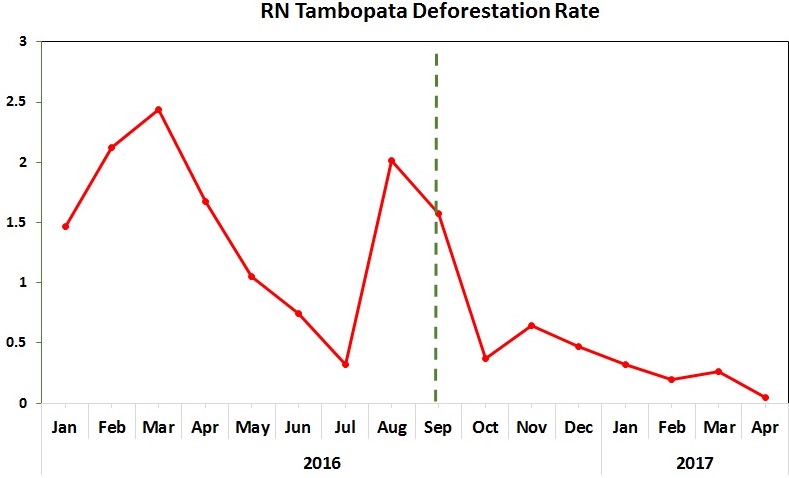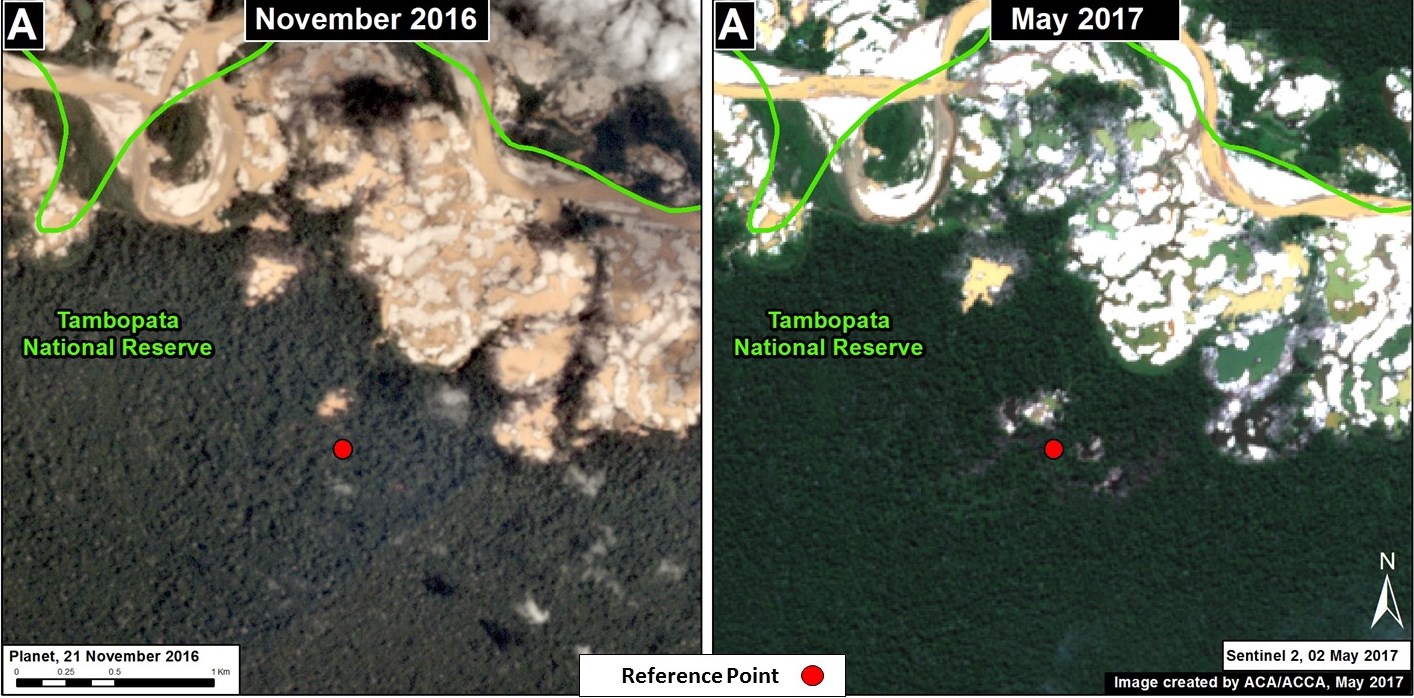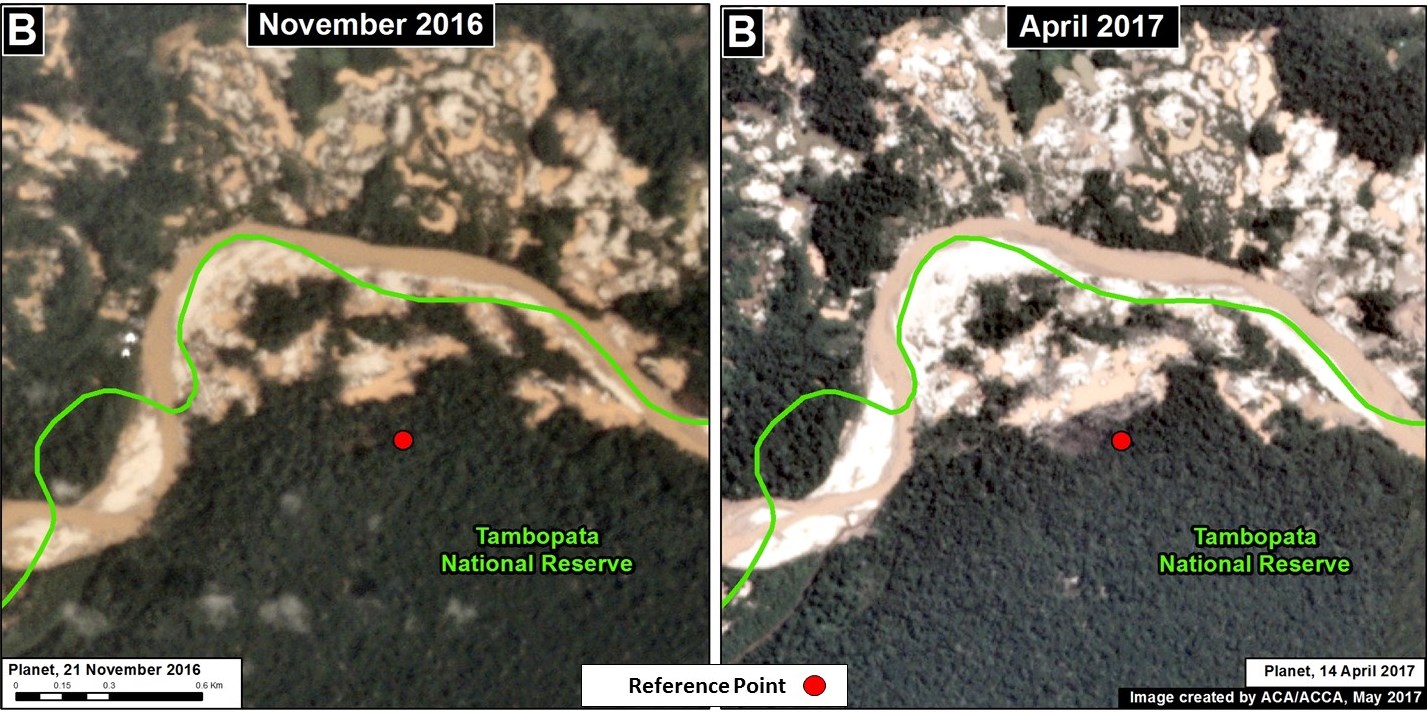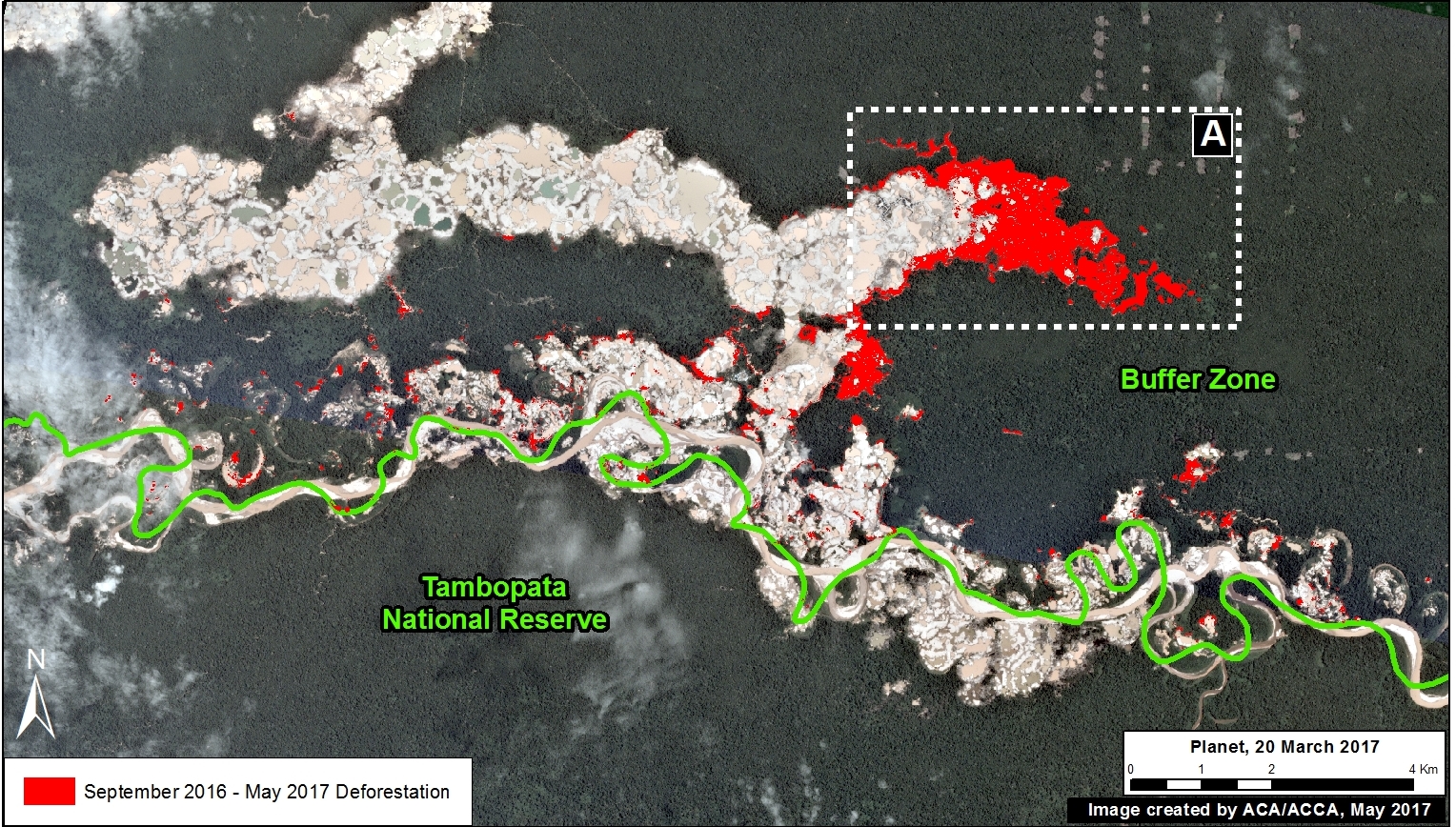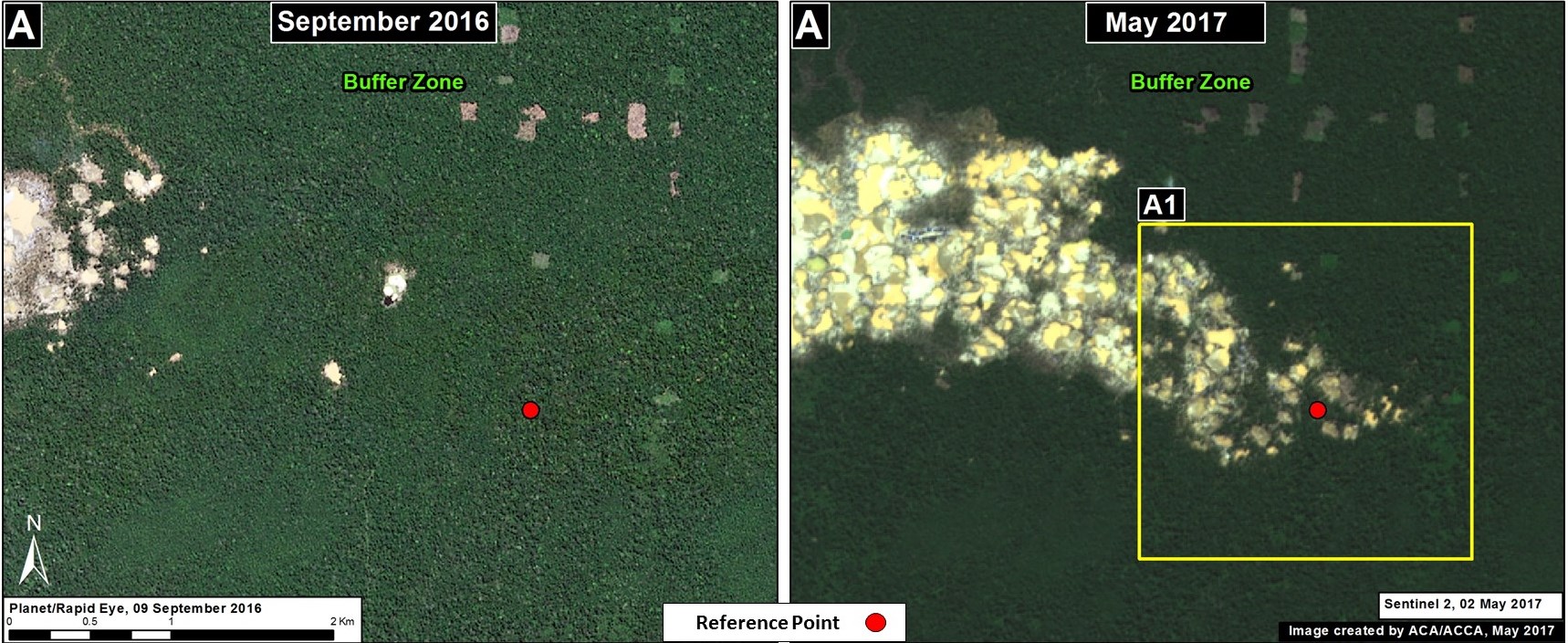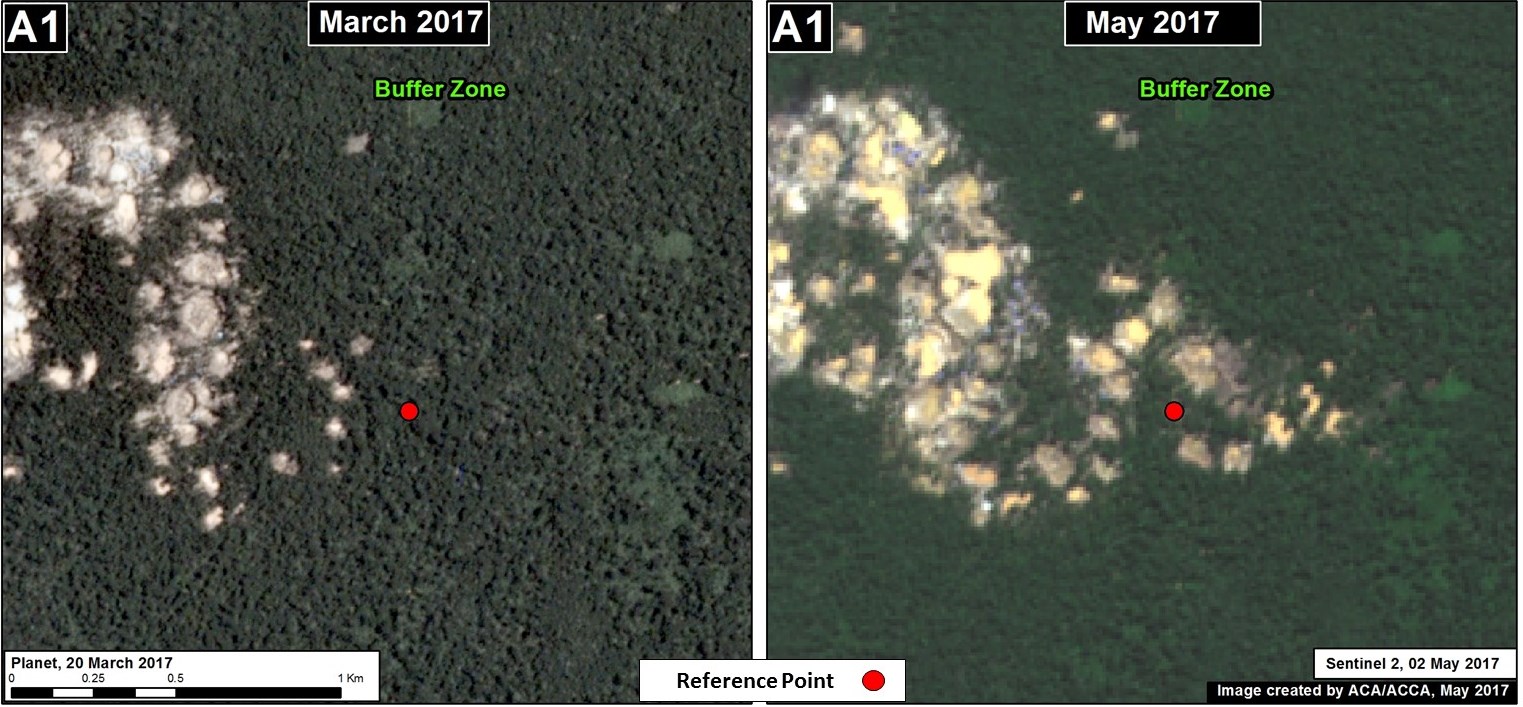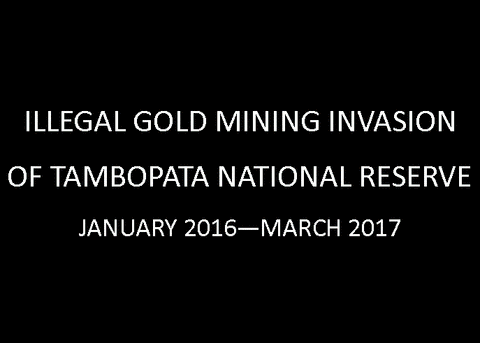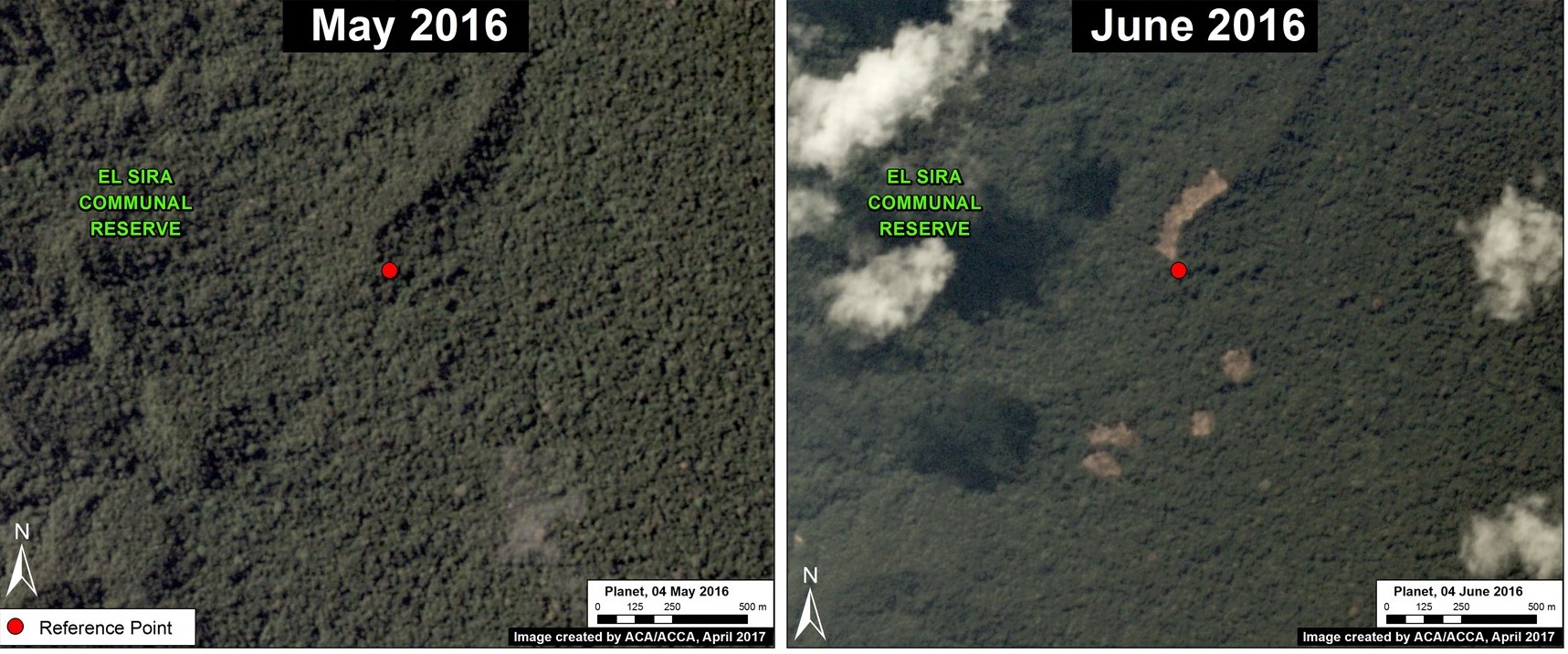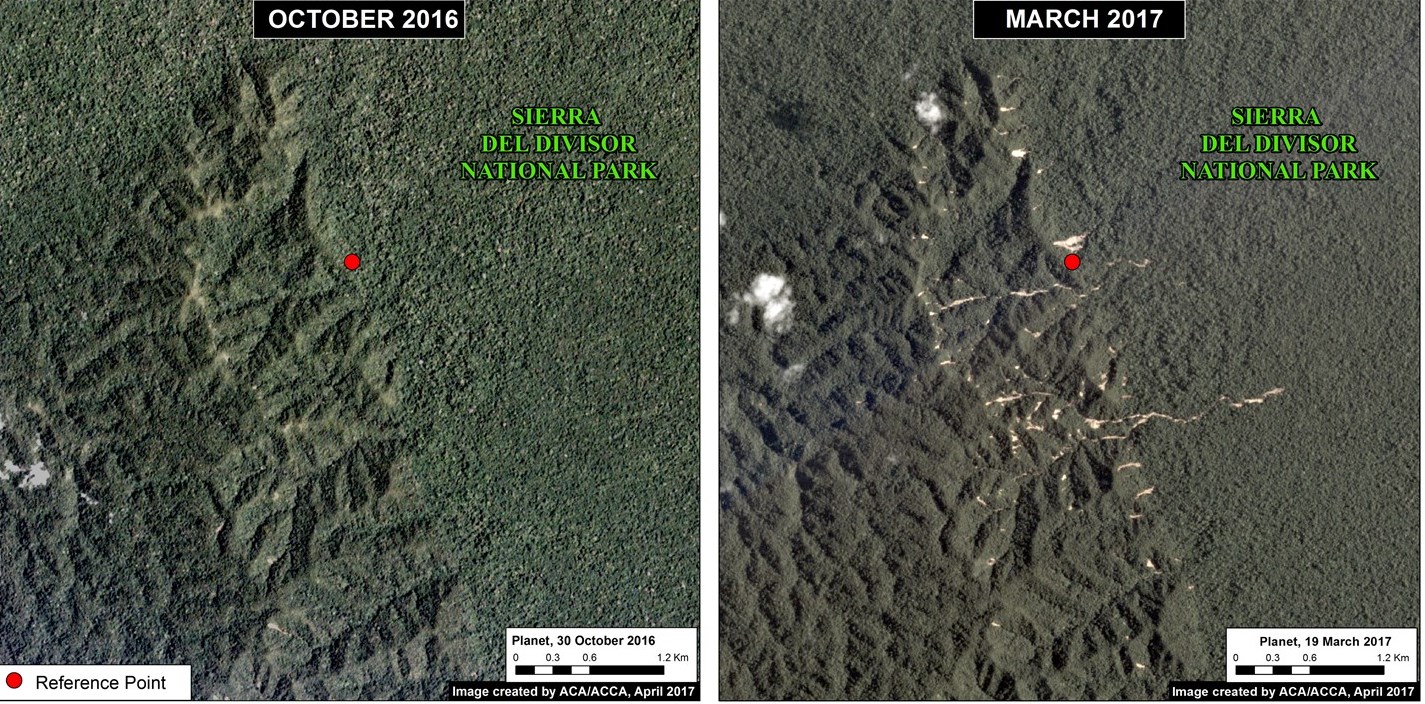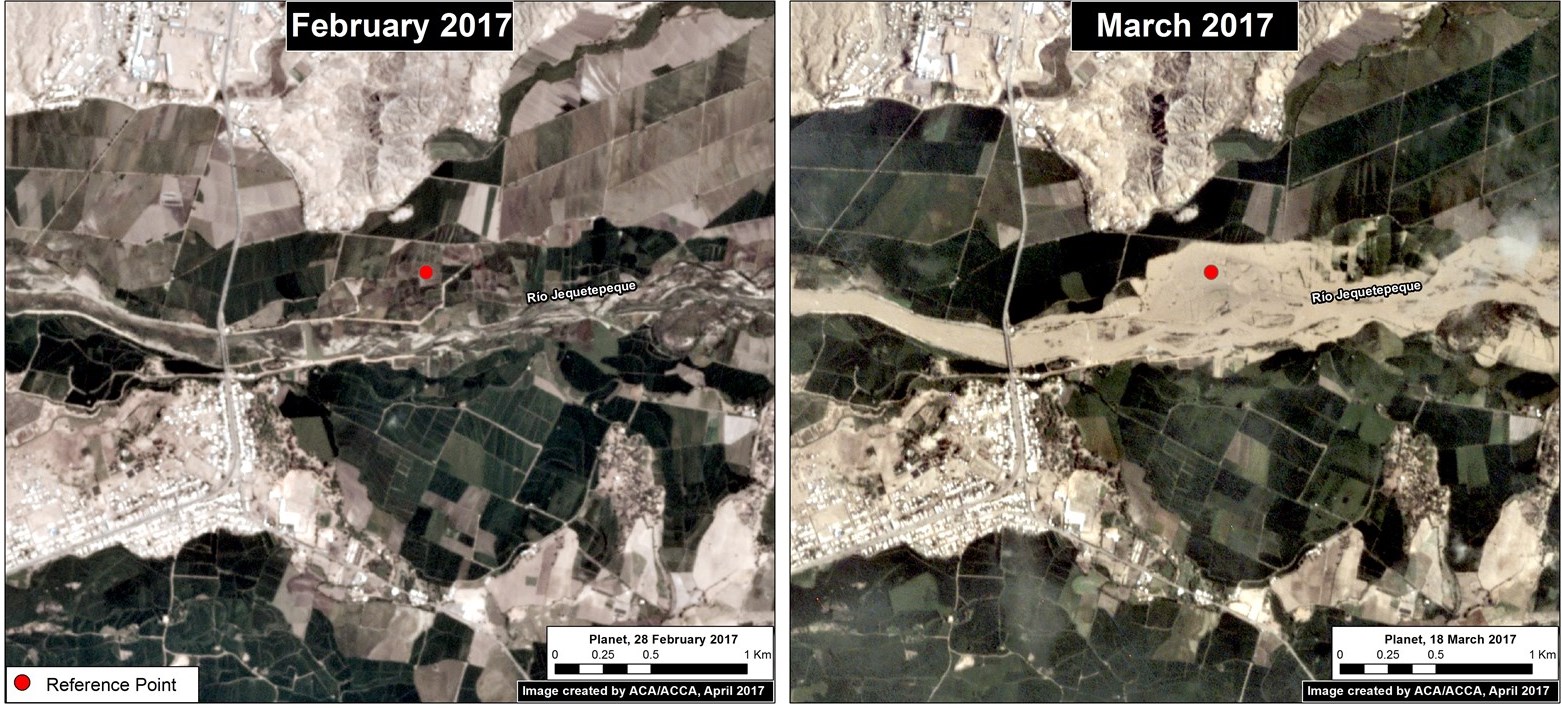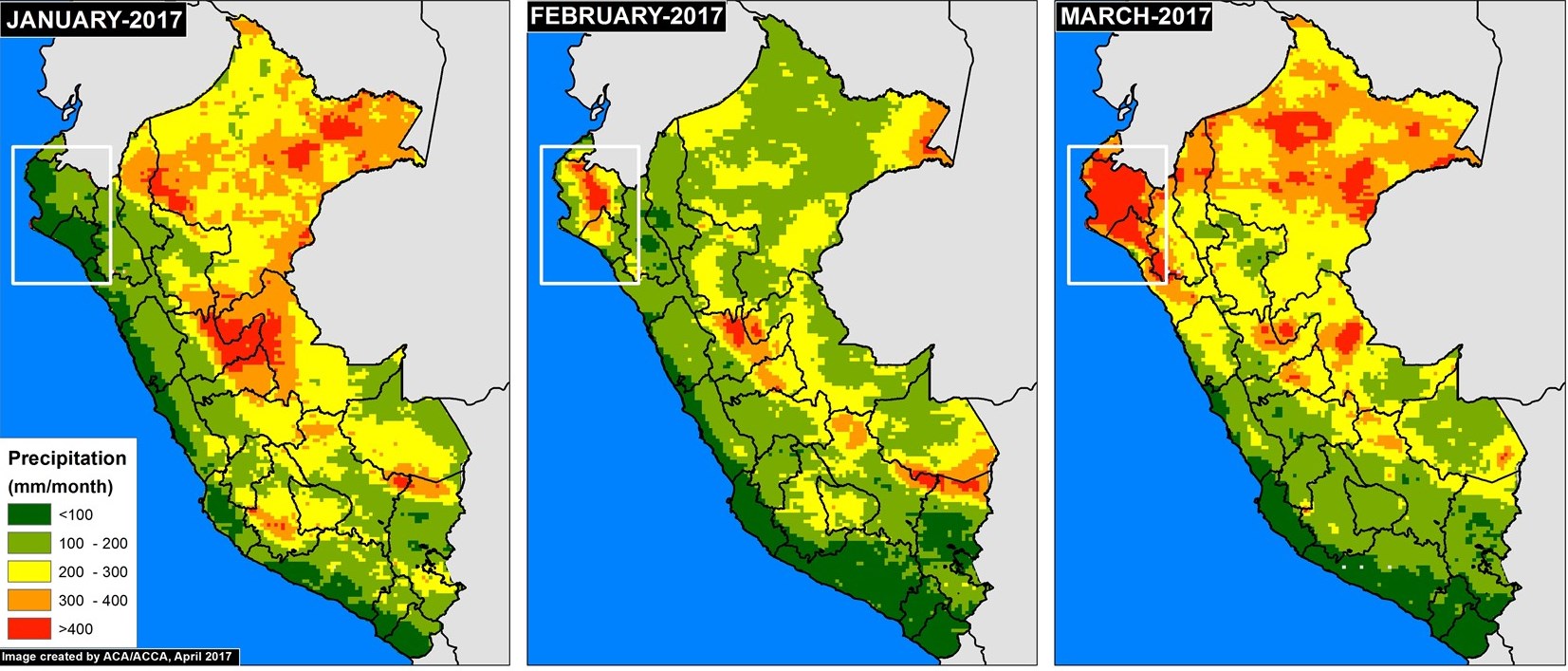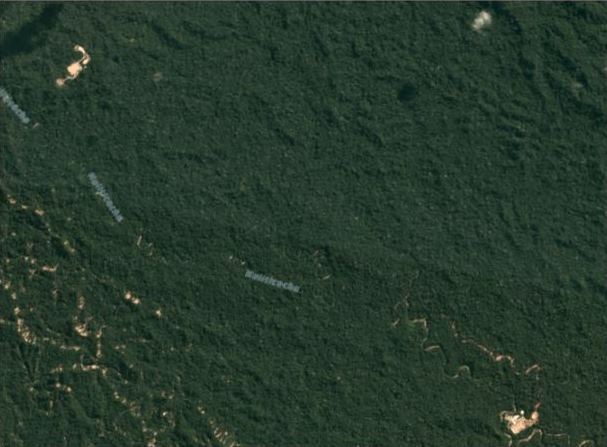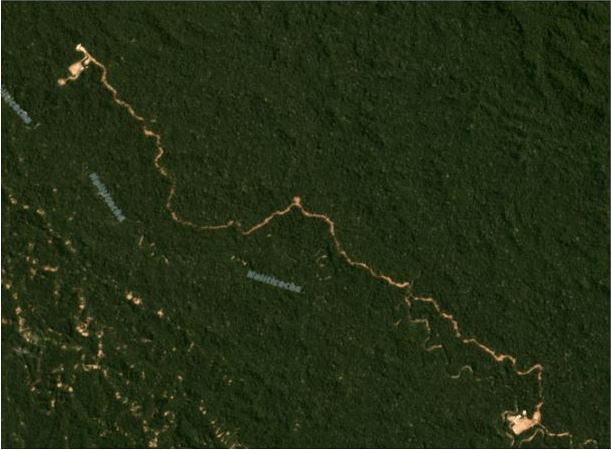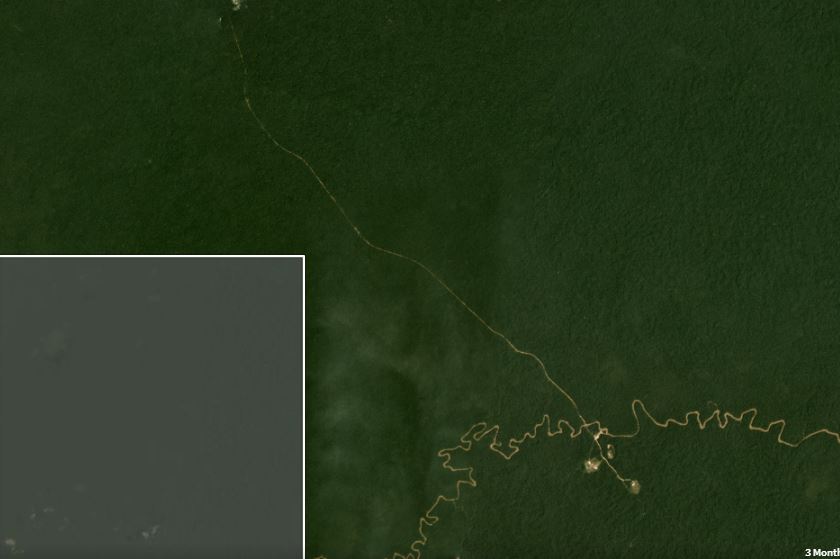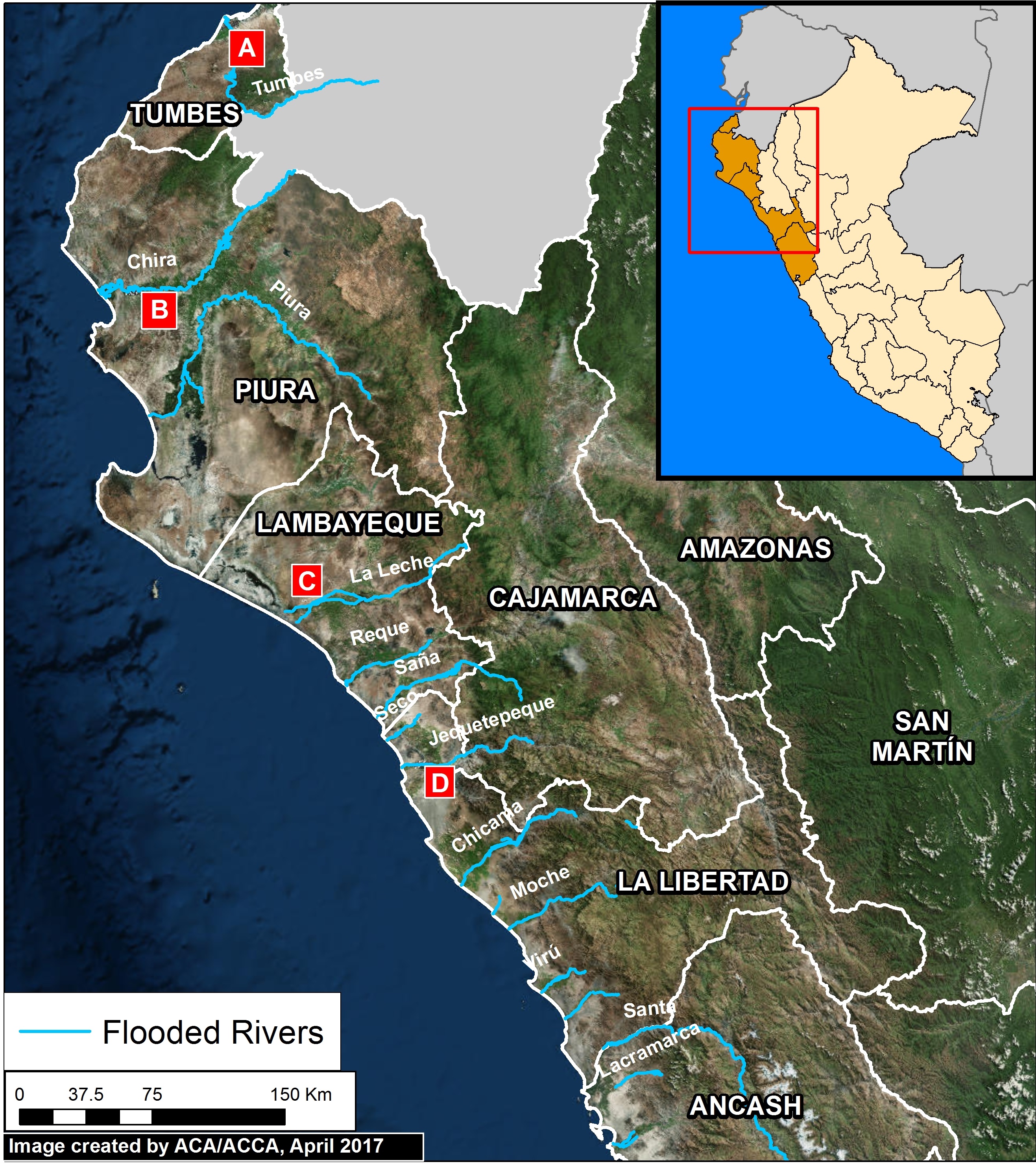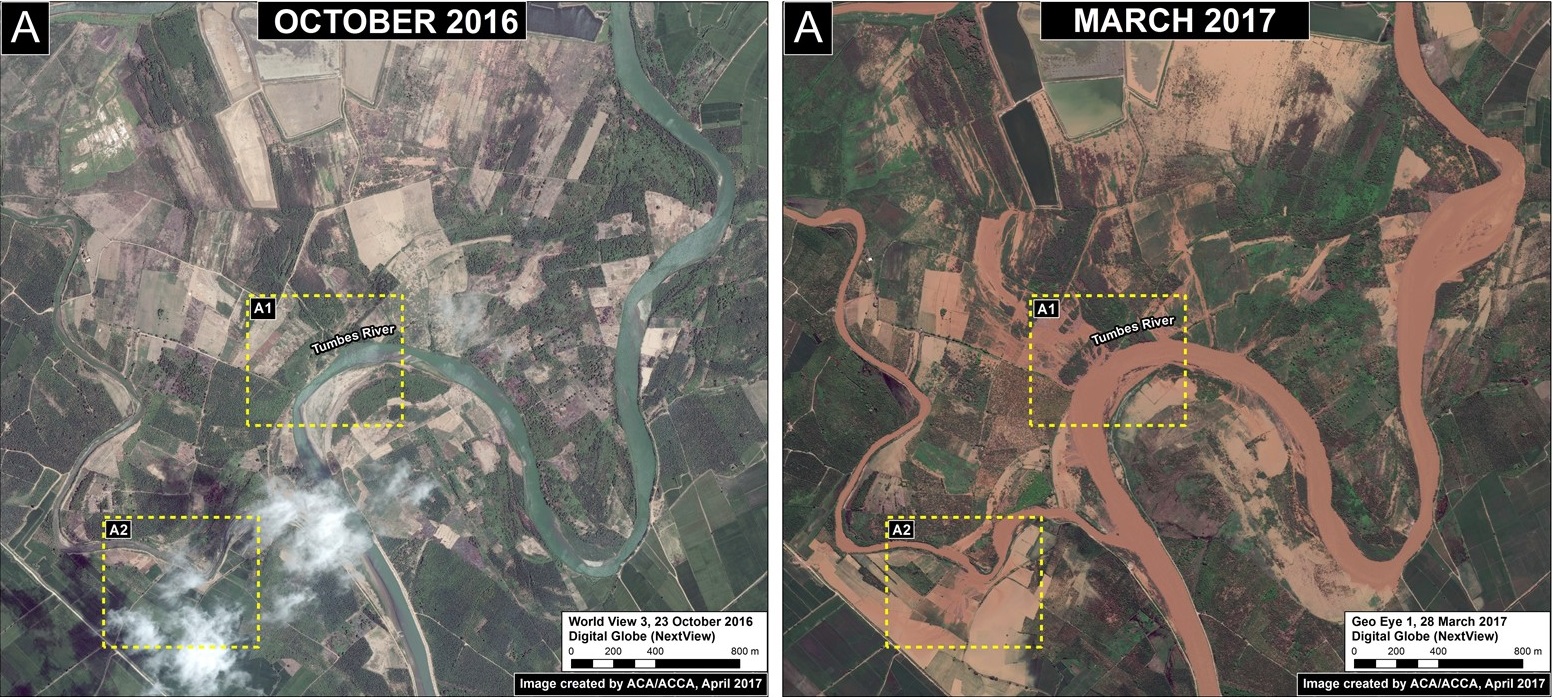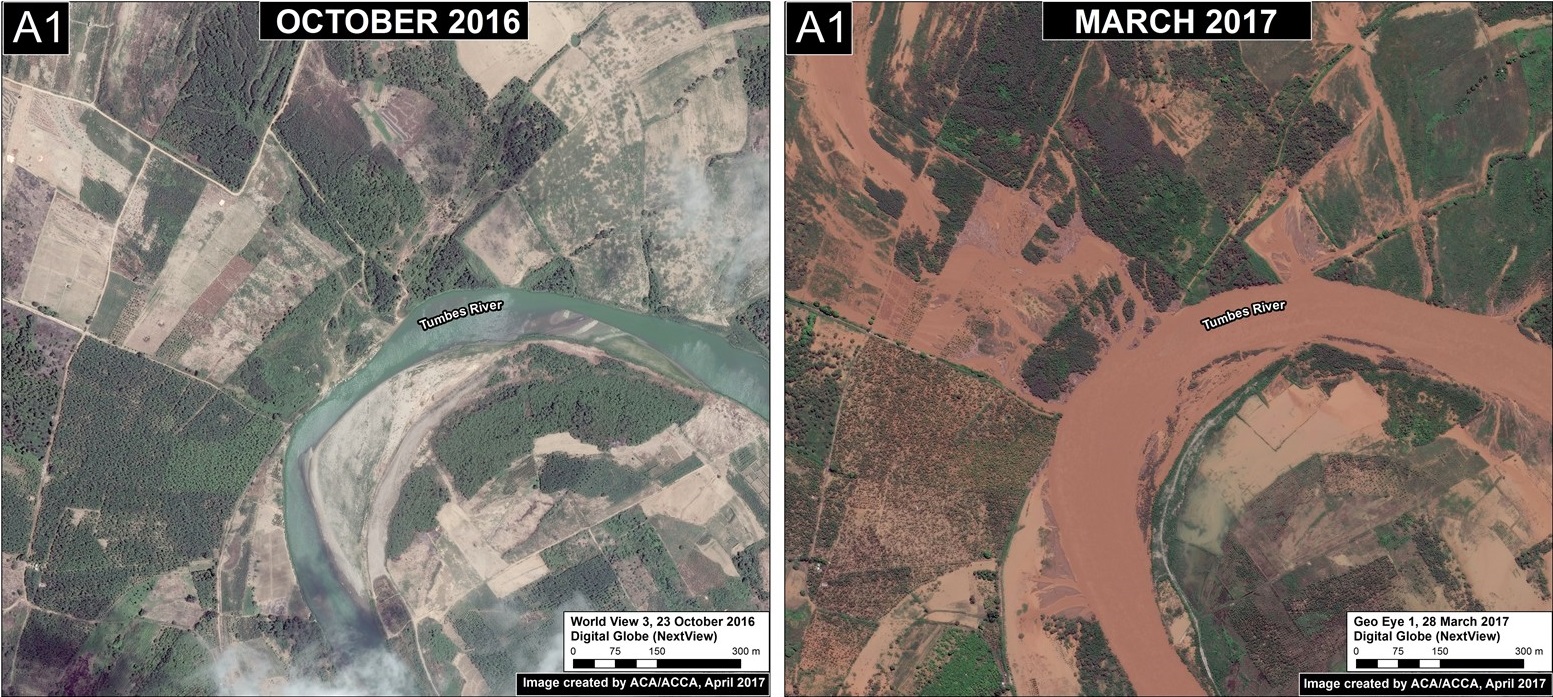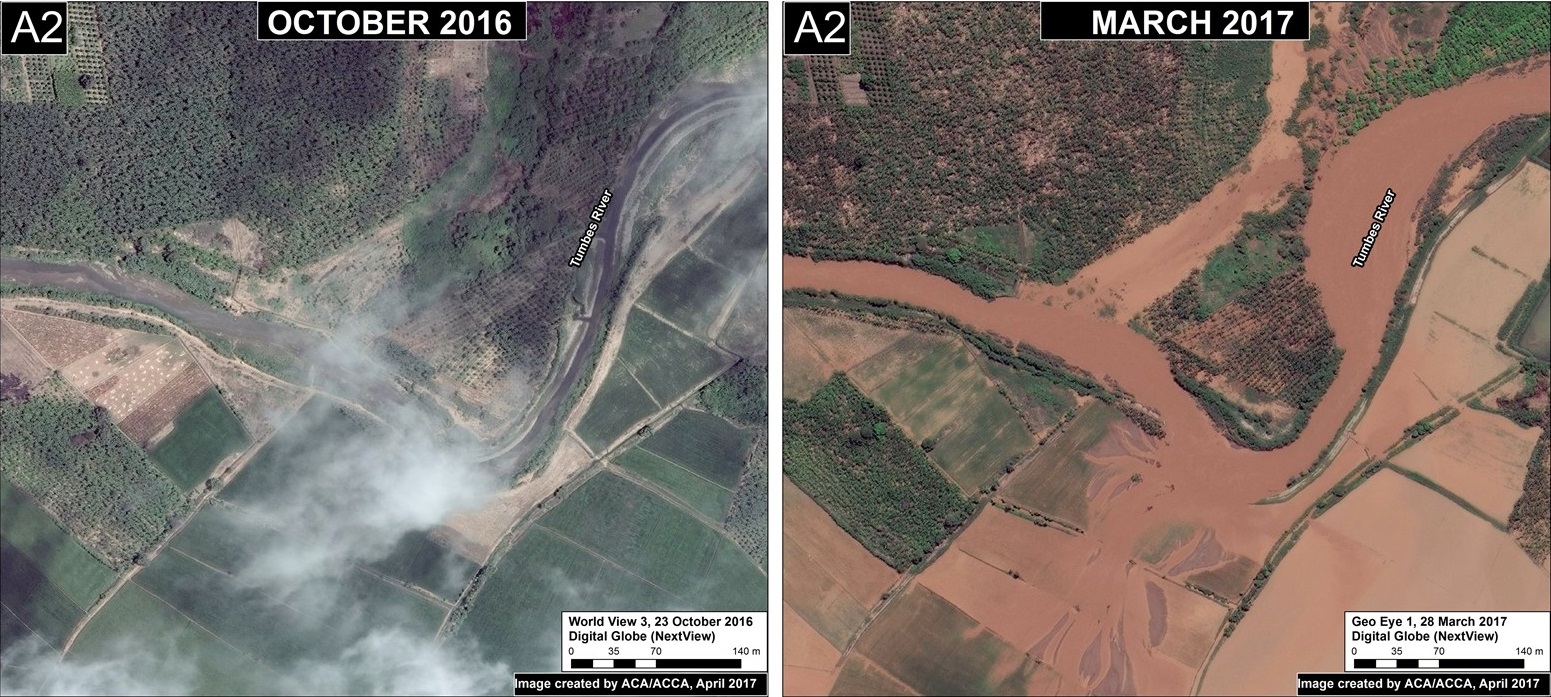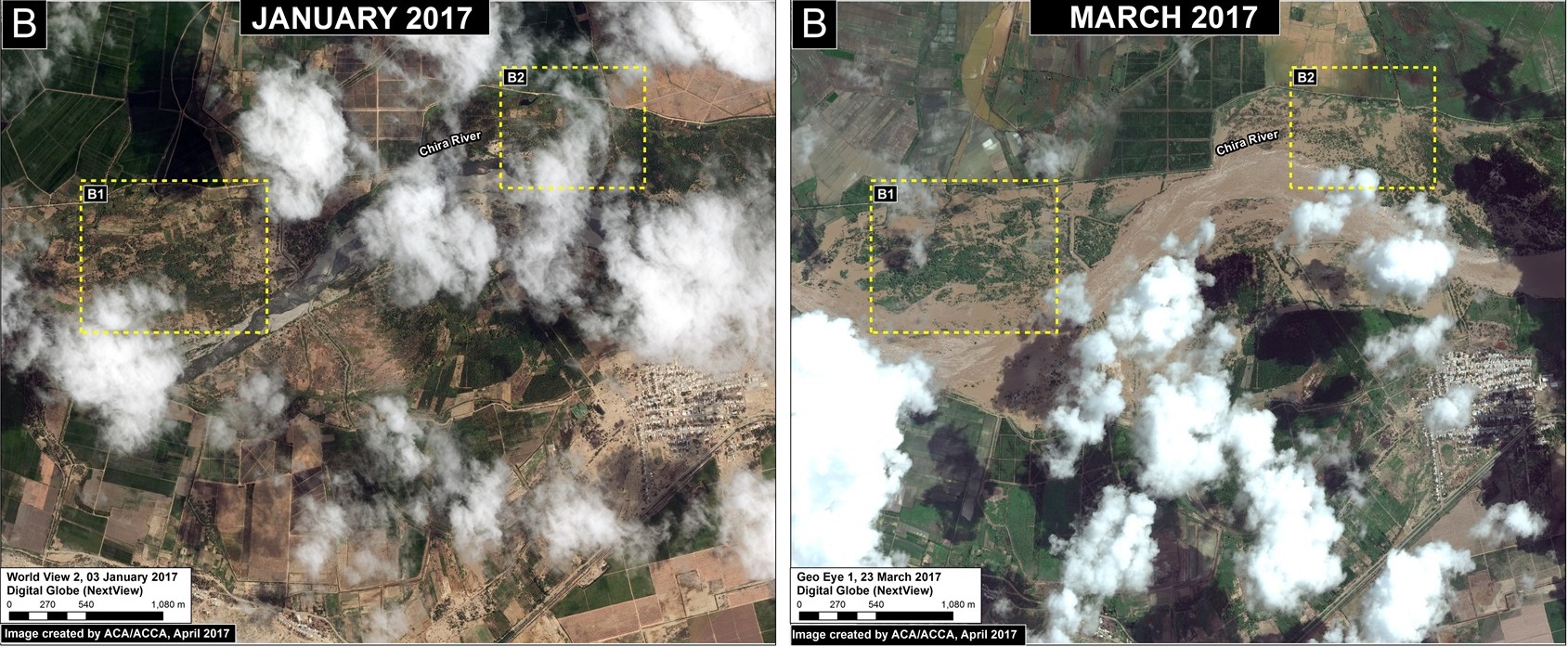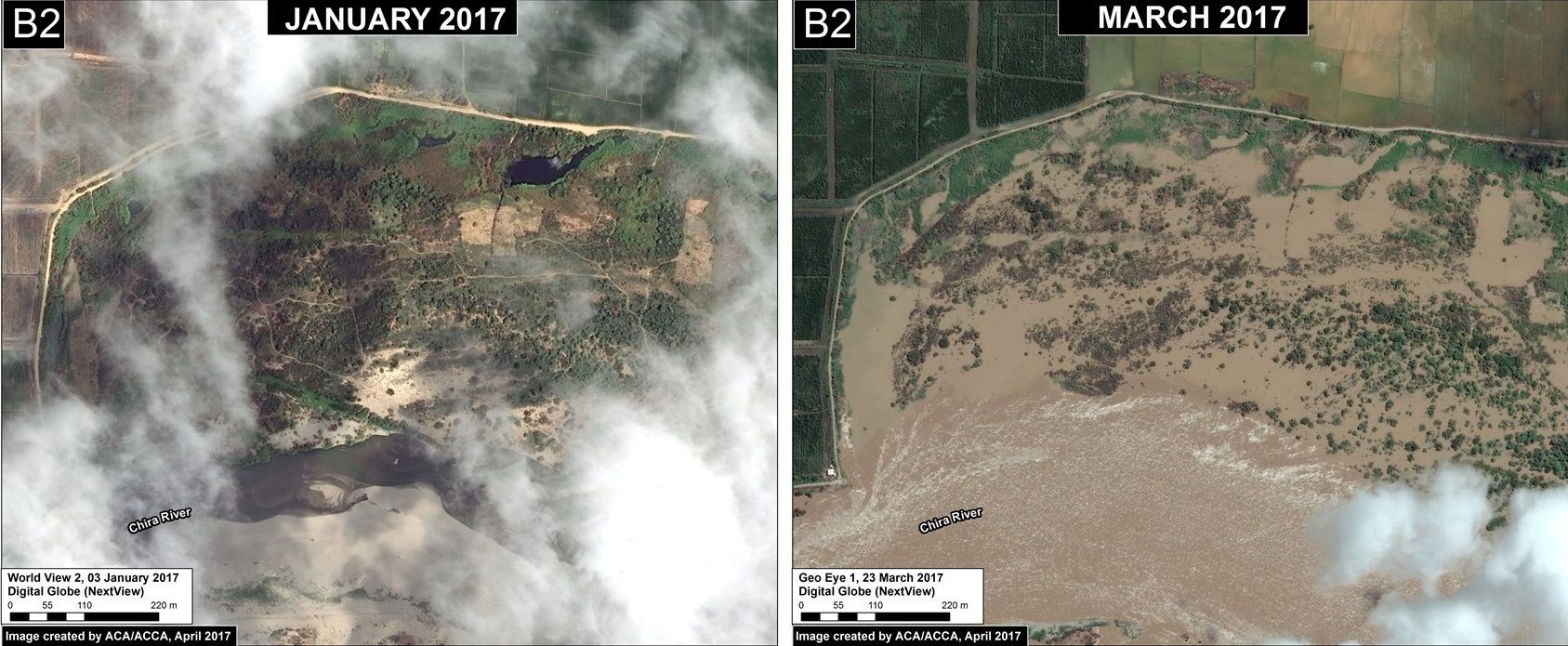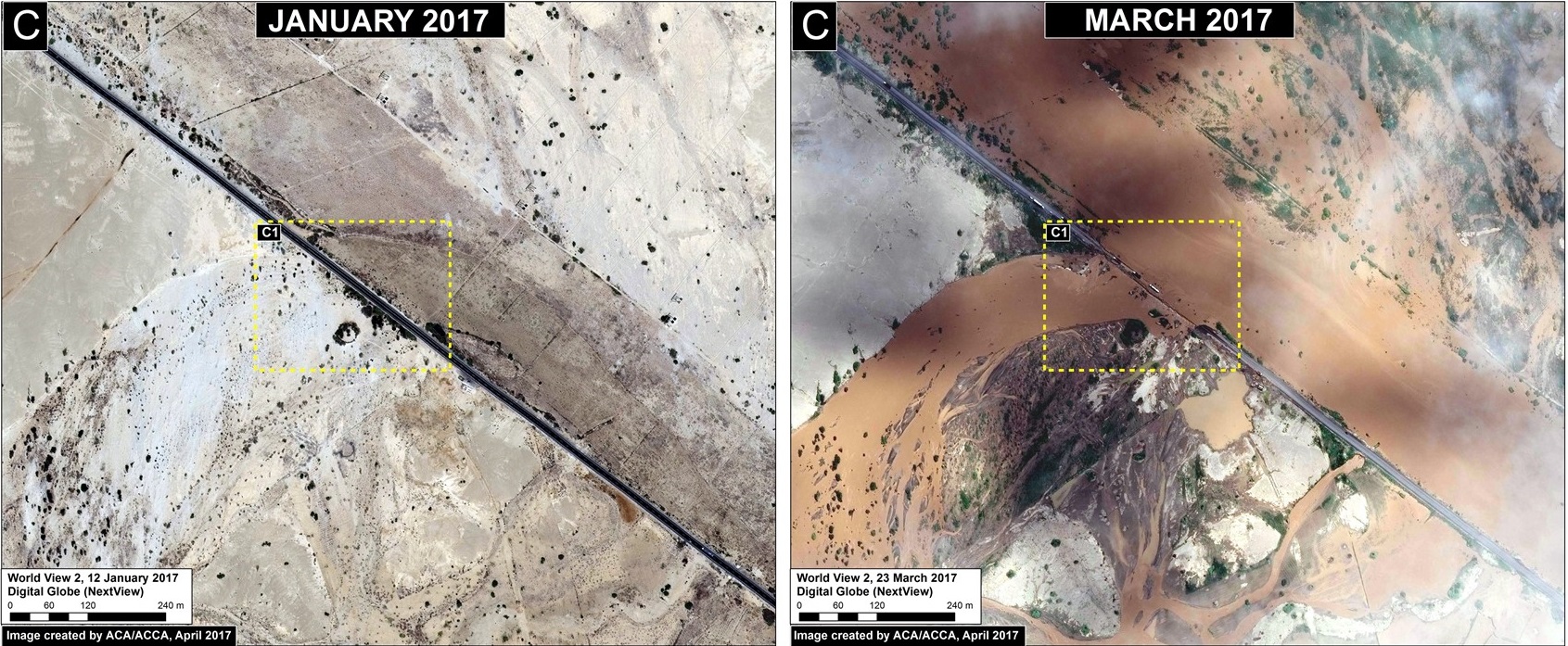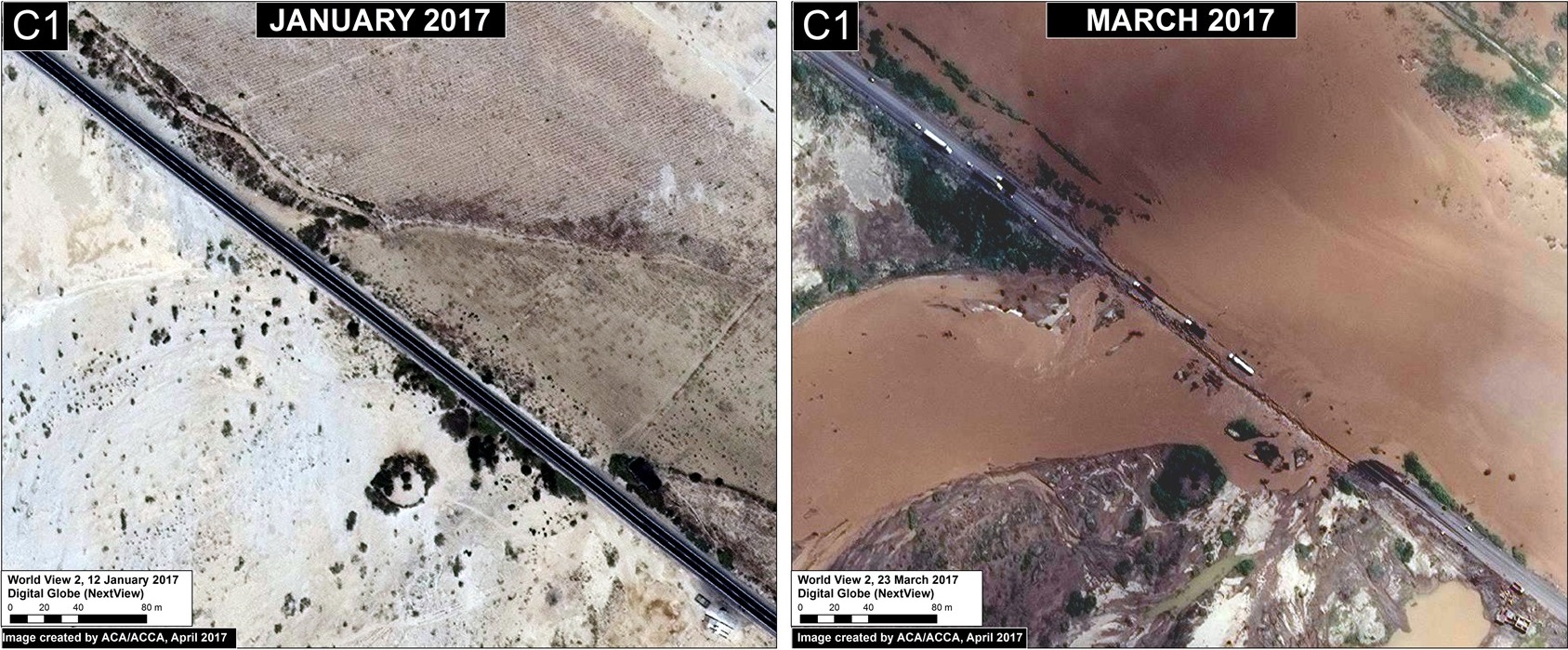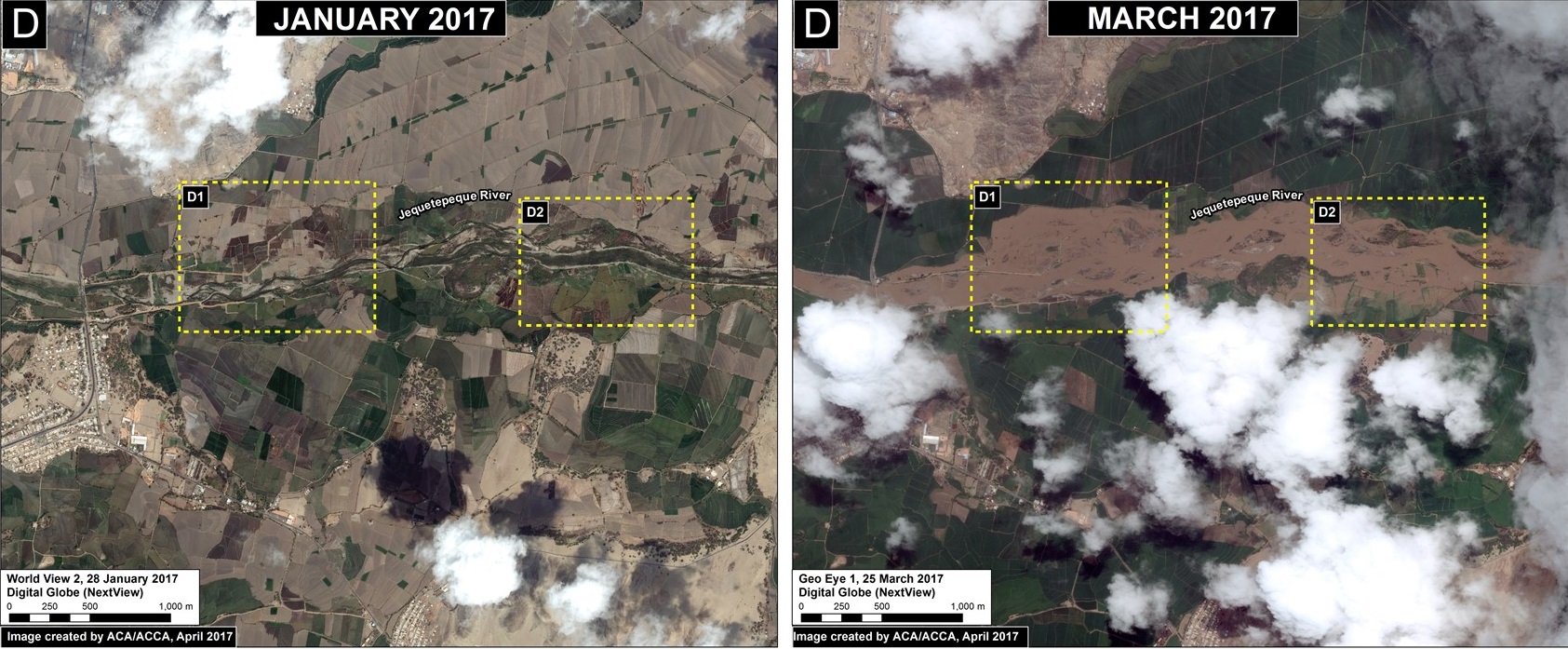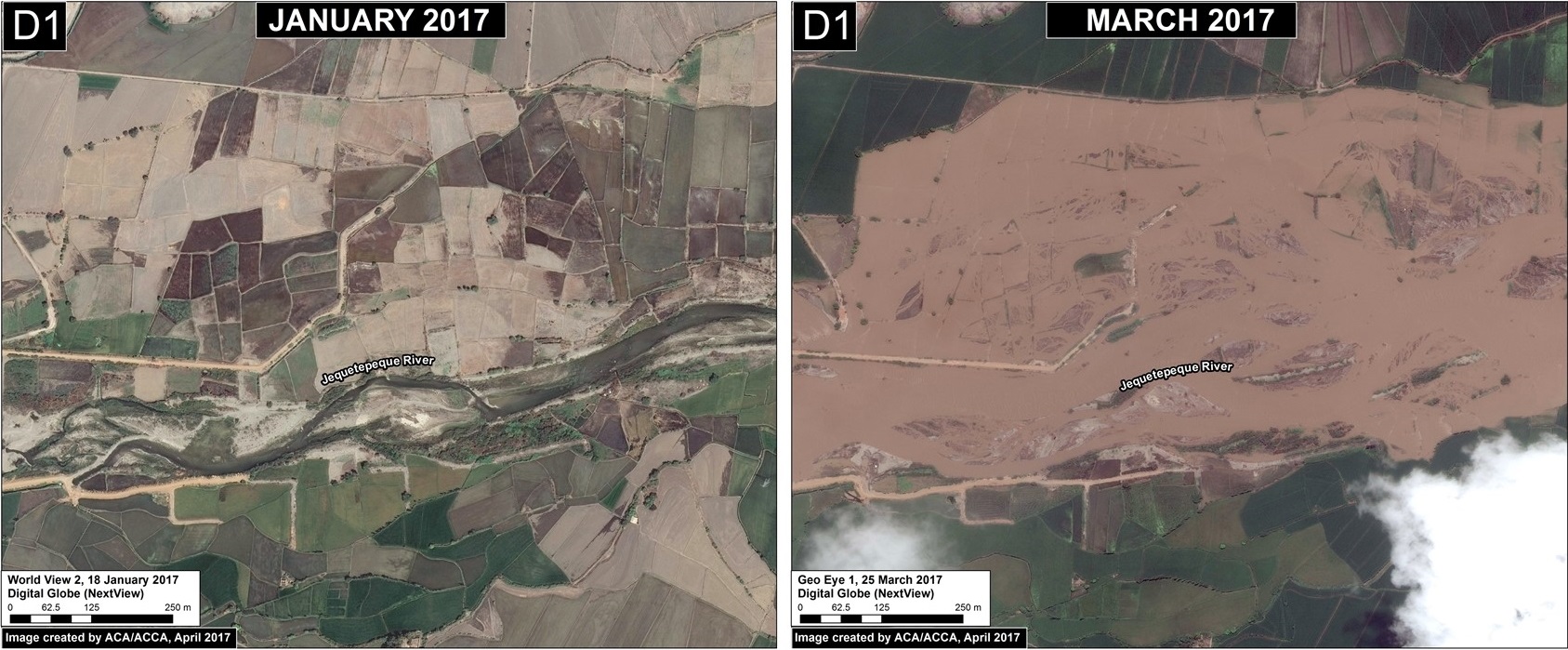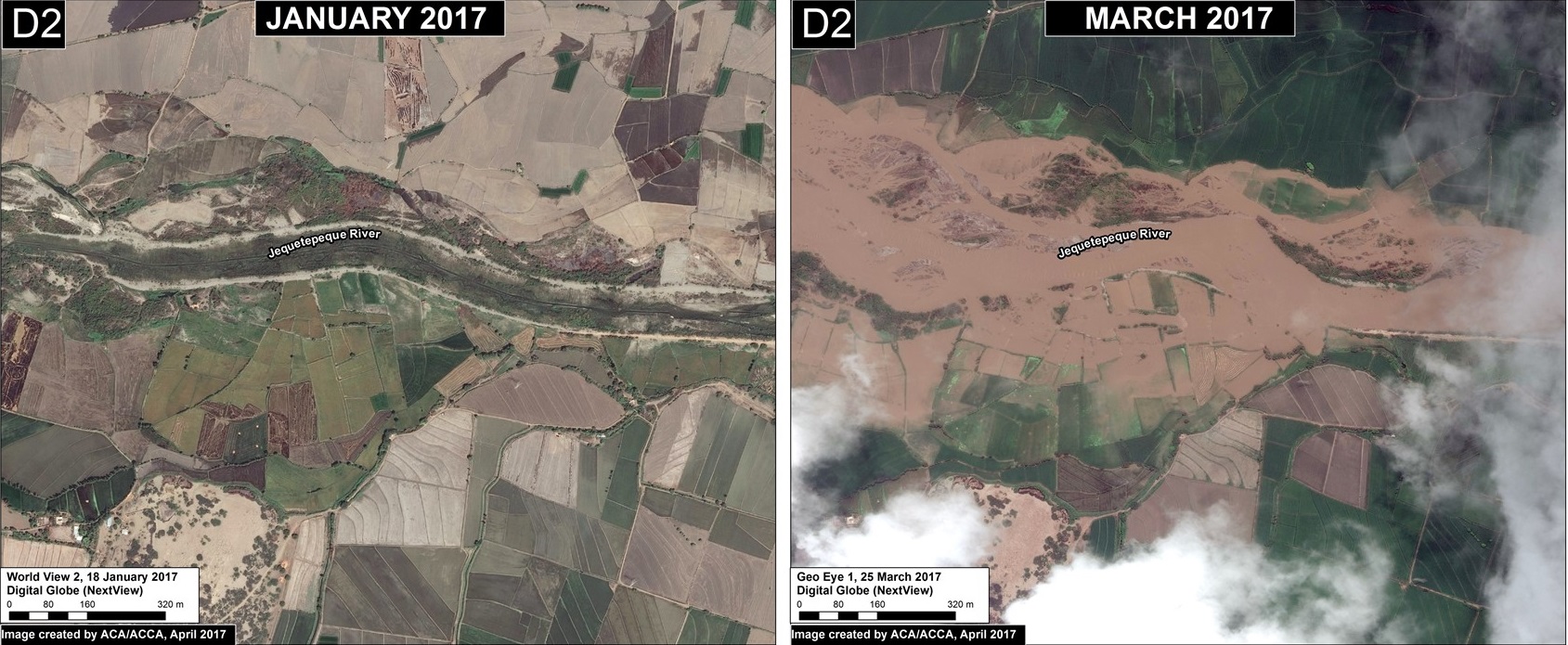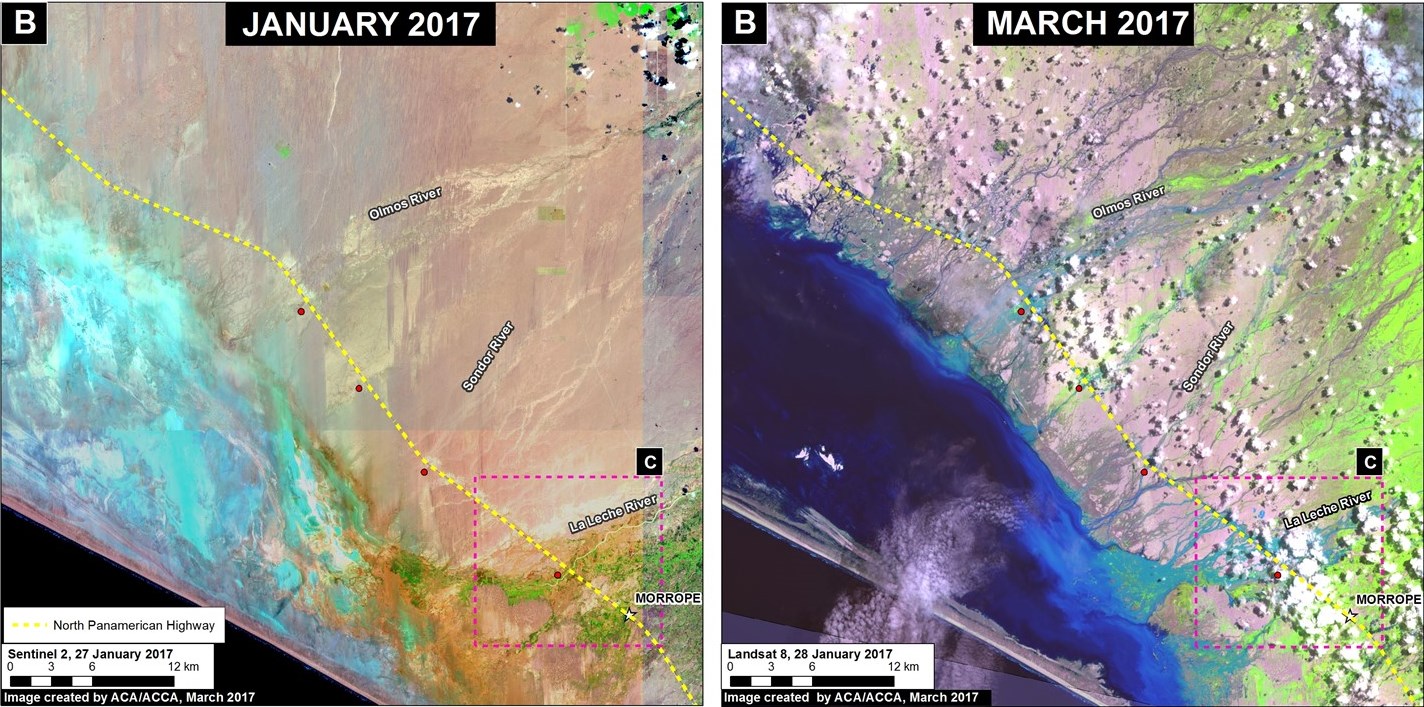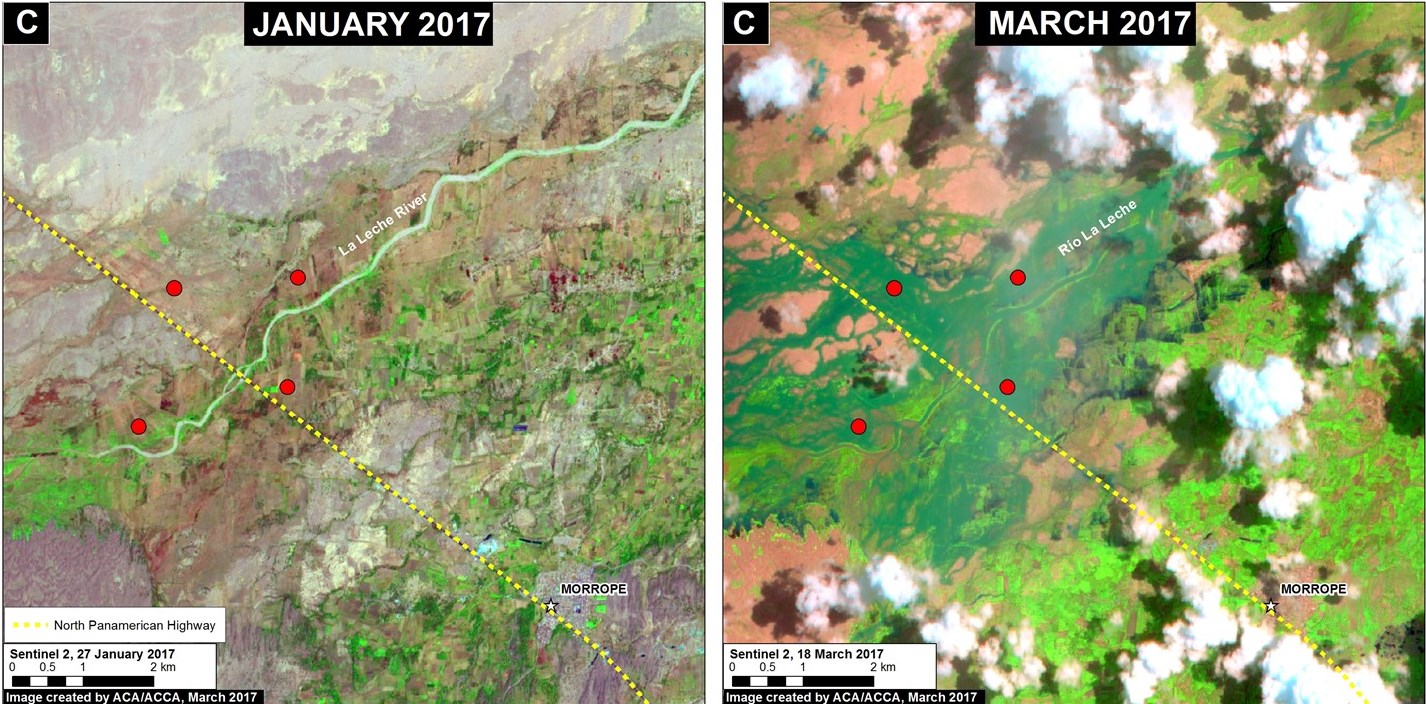In 2016, Peru experienced an intense forest fire season (MAAP #52, MAAP #53). A leading hypothesis was that intense drought facilitated the escape of agricultural burns. To investigate, this report analyzes the dynamic between fires and precipitation over the past 15 years, finding a strong temporal correlation (Image 62a). We also investigate the link between fires and forest loss, finding a spatial correlation.
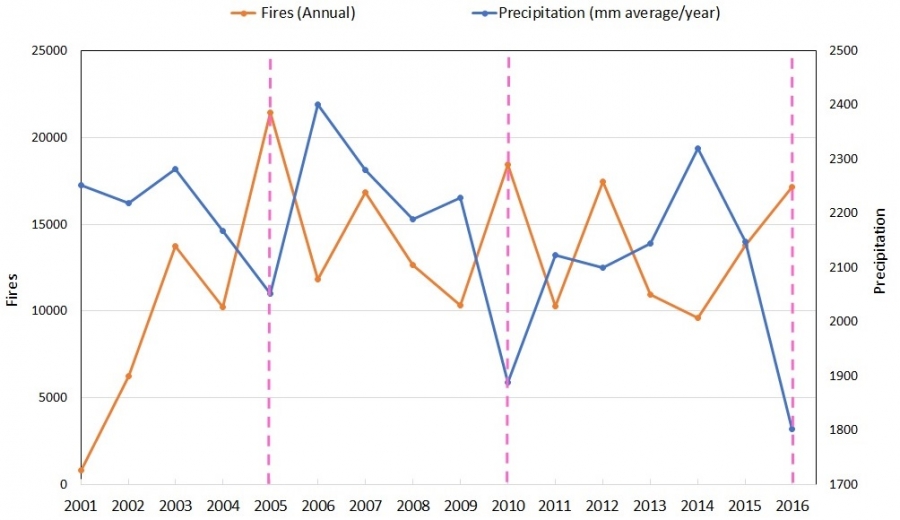
Image 62a. Data: TRMM, FIRMS/NASA, PNCB/MINAM, GLAD/UMD
Fire and Rain
Image 62a (see above) compares satellite data for fires and precipitation. Note that the three years with the least rain (2005, 2010, and 2016) correlate with the most fires (see pink lines)*. Similarly, the years with the most rain (2006 and 2014) correlate with low fire levels. Therefore, the 15-year data set indicates a strong correlation between fires and precipitation.
The exceptions of 2007 and 2012, which experienced spikes in fires despite relatively high precipitation, may be explained by the establishment of large-scale oil palm projects which generated many fires (MAAP #16, MAAP #41).
*See the Annex for information regarding the importance of increased number of dry days in 2005, 2010, and 2016.
Fire and Forest Loss
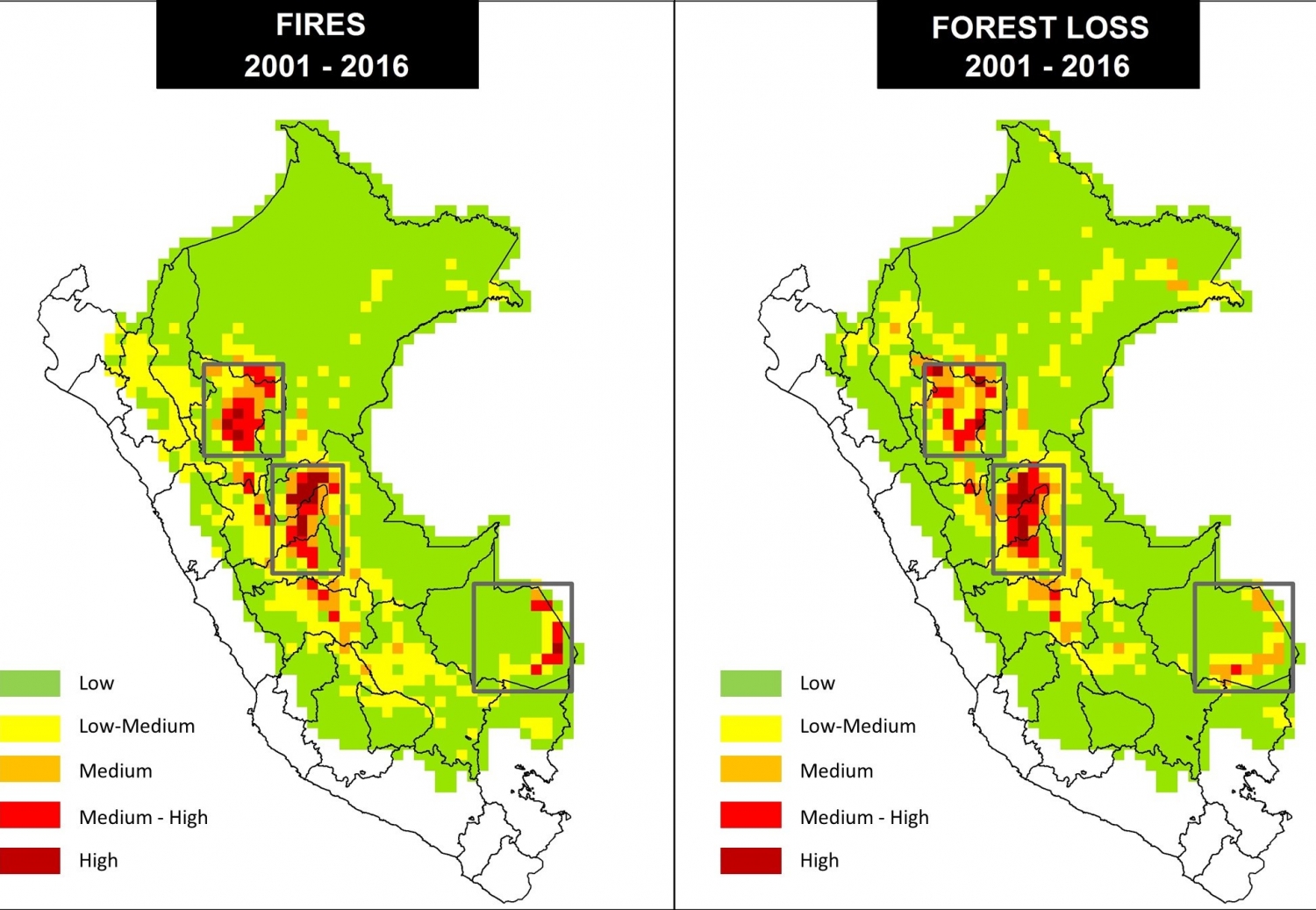
Image 62b. Data: FIRMS/NASA, PNCB/MINAM, GLAD/UMD
Image 62b shows the spatial correlation between fires and forest loss in the Peruvian Amazon over the last 15 years. The inset boxes indicate some of the hotspots that are common between the two variables.
Link between Fire, Rain, and Forest Loss

Image 62c. MAAP
A relationship exists between three key variables: fire, rain, and forest loss.
Amazonian research has found that drought increases fuel material within forests (References 1, 2, 3).
Thus, as illustrated in Image 62c, the reduction of precipitation results in an increase in combustible material that facilitates the conditions for forest fires and deforestation, which ultimately results in an increase in forest loss.
Increase in Dry Days
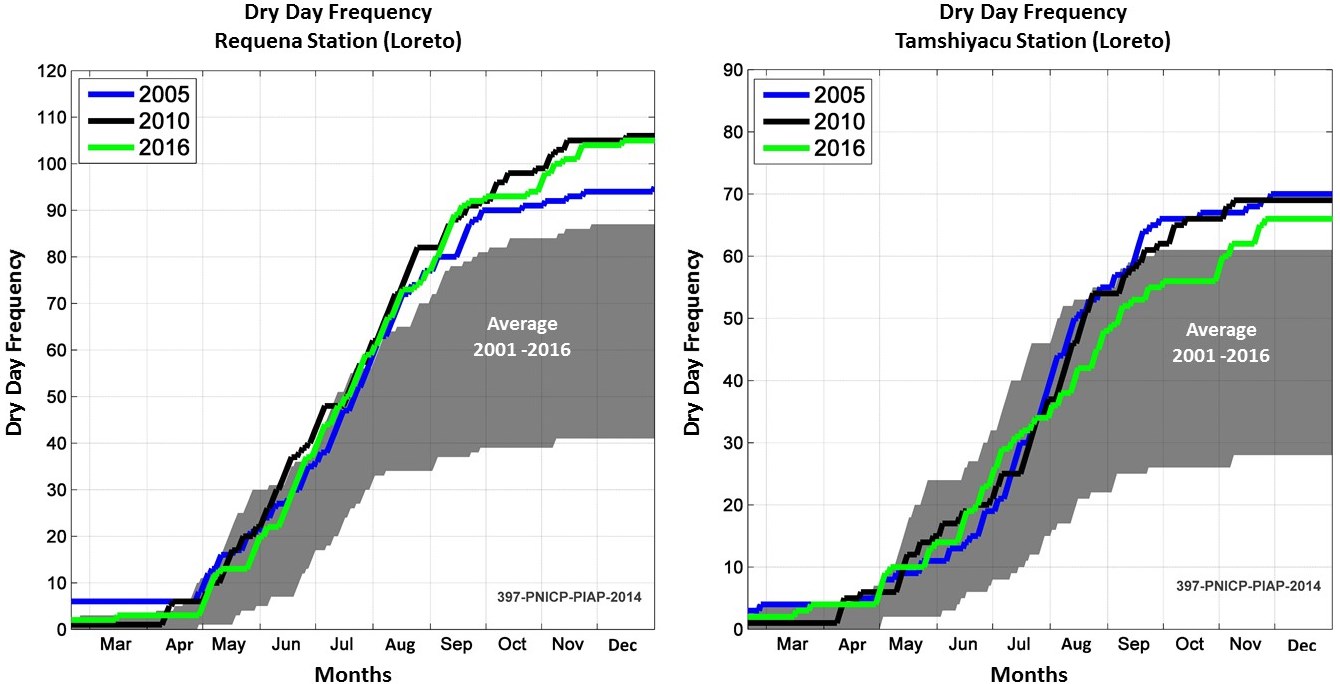
Image 62d: Data: NASA/IGP (Reference 6).
The years with the lowest annual rainfall – 2005, 2010, and 2016 – also had an increased number of “dry days” (24 hours without precipation). The number of dry days is linked to tree mortality, generating flammable material (References 4-5).
Image 62d shows a comparison of the frequency of dry days at two hydrometric stations in the northern Peruvian Amazon. Note that the number of dry days is 2016 was similar to the historic droughts in 2005 and 2010.
The Geophysical Institute of Peru (Instituto Geofisico del Perú) is monitoring the frequency of dry days in real time, as part of a study on extreme hydrological events in the Amazon. The monitoring of the frequency of dry days, a key variable regarding vegetative conditions and photosynthetic activity in the Amazon during extreme droughts, can be an important indicator of forest fire risk.
References
1. Alencar A et al. 2011. Temporal variability of forest fires in Eastern Amazonia. Ecological Aplications. 21(7) 2397-2412.
2. Armanteras & Retana, 2012. Dynamics, Patterns and Causes of Fires in Northwestern Amazonia. ONE 7(4): e35288. doi:10.1371/journal.pone.0035288
3. Gutierrez Velez et al., 2014. Land cover change interacts with drought severity to change fire regimes in Western Amazonia. Ecological Aplications. 24(6) 1323-1340.
4. Marengo, J.A & Espinoza, J.C. 2015. Review Extreme seasonal droughts and floods in Amazonia: causes, trends and impacts. International Journal of Climatology.
5. Espinoza JC; Segura H; Ronchail J; Drapeau G; Gutierrez-Cori O. 2016. Evolution of wet- and dry-day frequency in the western Amazon basin: Relationship with atmospheric circulation and impacts on vegetation. Water Resources Research.
6. Proyecto IGP-IRD, financiado mediante Innovate Peru: 397-PNICP-PIAP-2014: http://intranet.igp.gob.pe/eventos-extremos-amazonia-peruana/
Citation
Novoa S, Finer M (2017) Fire, Rain, and Deforestation in the Peruvian Amazon. MAAP: 62.





